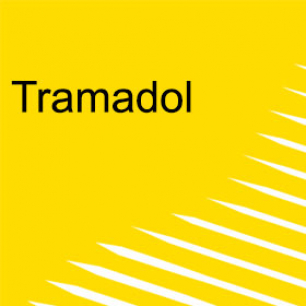Tramadol
What is tramadol?
Tramadol is an atypical opioid with a unique pharmaceutical profile and is used as an alternative to other pharmaceutical drugs for moderate pain relief (Barakat, 2019).
Tramadol can only be obtained with a doctor’s prescription. Non-medical use of tramadol refers to use that occurs outside a doctor’s prescription and is illegal in many countries, including Australia.
What are the effects?
Tramadol is used for its pain relieving (analgesic) effects which usually take less than one hour to come on and peak after about two to three hours.
The adverse effects of tramadol are similar to those of other opioids and include:
- Pain relief
- Dizziness or faintness
- Tiredness
- Confusion and difficulty concentrating
- Euphoria or negative mood
- Restlessness
- Stiff muscles
- Constipation
- Dry mouth
- Stomachache and nausea
What are the risks?
As tramadol has similar properties to other opioids, there are some similar risks, especially if it is used for non-medical purposes.
Regular use of tramadol may cause:
- Mood instability
- Reduced libido
- Constipation
Mixing tramadol with other drugs
There are adverse effects if tramadol is taken with other drugs:
- Tramadol and sedatives (alcohol, benzodiazepines or opioids) increase the risk of respiratory depression, coma and death
- Tramadol and some medications to treat depression increase the risk of seizures
- Tramadol and psychostimulants can trigger serotonin syndrome
Toxicity and overdose
Overdose of tramadol is associated mainly with lethargy, nausea, and tachycardia (fast heart rate) (Barakat, 2019).
Dependence and withdrawal
Some studies support a link between tramadol and dependence, but due to its lower potency compared to opioids like morphine and fentanyl, dependence is less likely. Tramadol abuse-potential increases with chronic administration and withdrawal symptoms are similar to those in classic opioid abstinence syndrome and include restlessness, agitation, anxiety, sweating, insomnia, hyperkinesia, tremor, paresthesias, and gastrointestinal symptoms (Barakat, 2019).
How many people use tramadol?
According to the Australian Institute of Health and Welfare, 2.4 million (or 11.7 percent) people in Australia misused a pharmaceutical drug at some point in their lifetime (AIHW, 2020).
In 2018, 230 deaths were recorded related to the use of synthetic opioids (including tramadol, fentanyl, and pethidine) (Man et.al, 2019).
Treatment
Treatment of tramadol overdose involves respiratory support, administration of an opioid antagonist, naloxone , and anticonvulsant drugs (Barakat, 2019).
Treatment for dependence on tramadol differs depending on severity of the addiction, and a range of other factors.
Treatments could include taking an opioid agonist treatment, behavioural therapy in an inpatient or outpatient setting, cognitive behavioural therapy, specialised treatment programs, and recovery groups.
Emergency info
If you, or someone around you, is experiencing undesired or distressing psychological or physical symptoms from the intake of alcohol or other drugs please seek immediate medical attention.
If you need urgent help from ambulance services call Triple Zero (000). If a person has been mixing drugs with alcohol or other drugs, tell the paramedic exactly what has been taken.
Services
For free and confidential advice about alcohol and other drugs, call the National Alcohol and Other Drug hotline on 1800 250 015.
The hotline will automatically direct you to the Alcohol and Drug Information Service in your state or territory.
More resources
The Illicit Drug Reporting System is an Australian monitoring system that identifies emerging trends of local and national interest in illicit drug markets.
The Ecstasy and Related Drugs Reporting System is an Australian monitoring system for ecstasy and related drugs that identifies emerging trends of local and national interest.
The Clinician’s Guide to Illicit Drugs and Health examines the health effects of each of the major illicit drugs.
The Australian Institute of Health and Welfare collects information on alcohol and tobacco consumption, and illicit drug use among the general population in Australia.
The Australian Bureau of Statistics is Australia’s national statistical agency, providing official statistics on a range of economic, social, population and environmental matters of importance to Australia.
Sources
Australian Institute of Health and Welfare (2020). Australian National Drug Strategy Household Survey 2019. Retrieved from https://www.aihw.gov.au/reports/illicit-use-of-drugs/national-drug-strategy-household-survey-2019/contents/table-of-contents
Barakat, A. (2019). Revisiting Tramadol: A Multi-Modal for Pain Management, Springer Nature Switzerland.
Darke, S., Lappin, J., & Farrell, M. (2019). The Clinician’s Guide to Illicit Drugs and Health, Great Britain: Silverback Publishing.
Man, N., Chrzanowska, A., Dobbins, T., Degenhardt, L., Peacock, A. (2019). Trends in Drug-induced Deaths in Australia, 1997-2018. National Drug and Alcohol Research Centre, UNSW Sydney.


